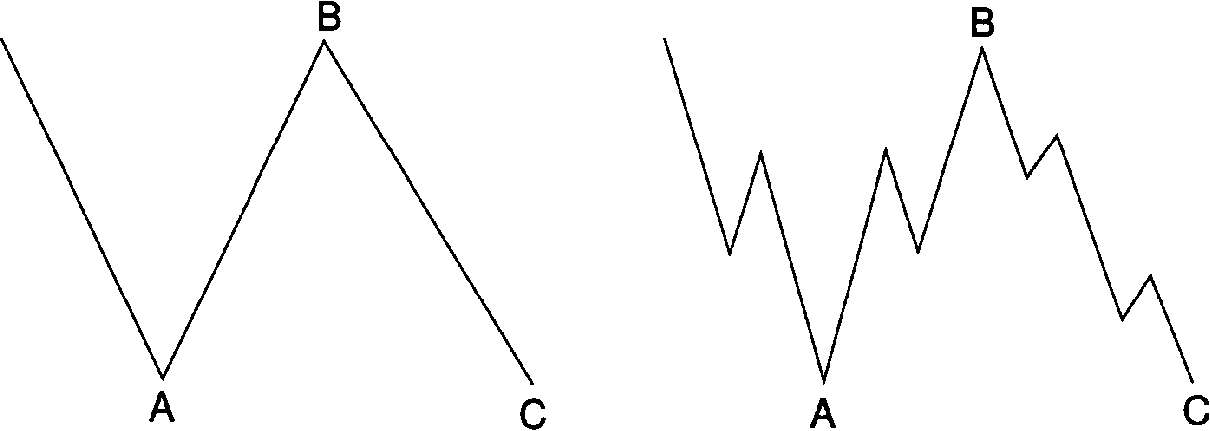Flats (3-3-5)
A flat correction differs from a zigzag in that the subwave sequence is 3-3-5, as shown in Figures 1-29 and 1-30. Since the first actionary wave, wave A, lacks sufficient downward force to unfold into a full five waves as it does in a zigzag, the B wave reaction, not surprisingly, seems to inherit this lack of countertrend pressure and terminates near the start of wave A. Wave C, in turn, generally terminates just slightly beyond the end of wave A rather than significantly beyond as in zigzags.

Figure 1-29 Figure 1-30
In a bear market, the pattern is the same but inverted, as shown in Figures 1-31 and 1-32.

Figure 1-31 Figure 1-32
Flat corrections usually retrace less of preceding impulse waves than do zigzags. They participate in periods involving a strong larger trend and thus virtually always precede or follow extensions. The more powerful the underlying trend, the briefer the flat tends to be. Within impulses, fourth waves frequently sport flats, while second waves do so less commonly.
What might be called "double flats" do occur. However, Elliott categorized such formations as "double threes," a term we discuss in Lesson 9.
The word "flat" is used as a catchall name for any A-B-C correction that subdivides into a 3-3-5. In Elliott literature, however, three types of 3-3-5 corrections have been identified by differences in their overall shape. In a regular flat correction, wave B terminates about at the level of the beginning of wave A, and wave C terminates a slight bit past the end of wave A, as we have shown in Figures 1-29 through 1-32. Far more common, however, is the variety called an expanded flat, which contains a price extreme beyond that of the preceding impulse wave. Elliott called this variation an "irregular" flat, although the word is inappropriate as they are actually far more common than "regular" flats.
Get 30% payoff from subscriptions!: https://www.mql5.com/en/signals/36068
END OF LESSON 4 - PART 1.



